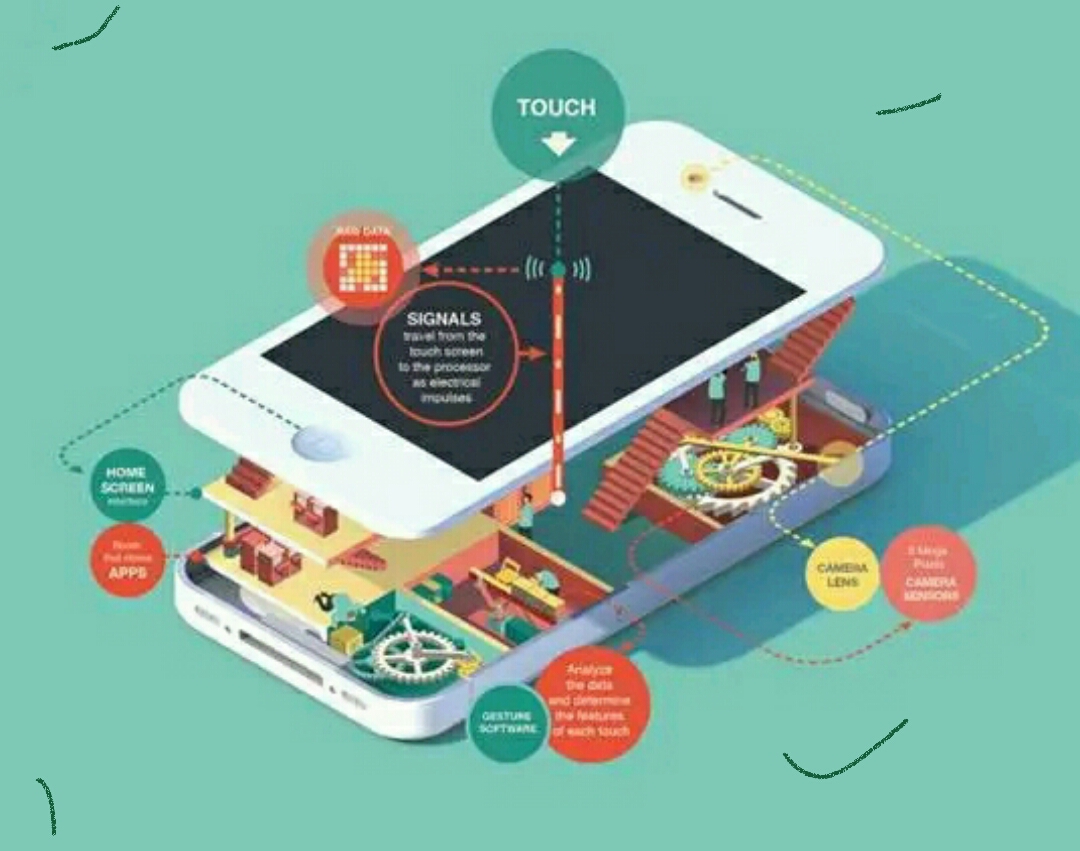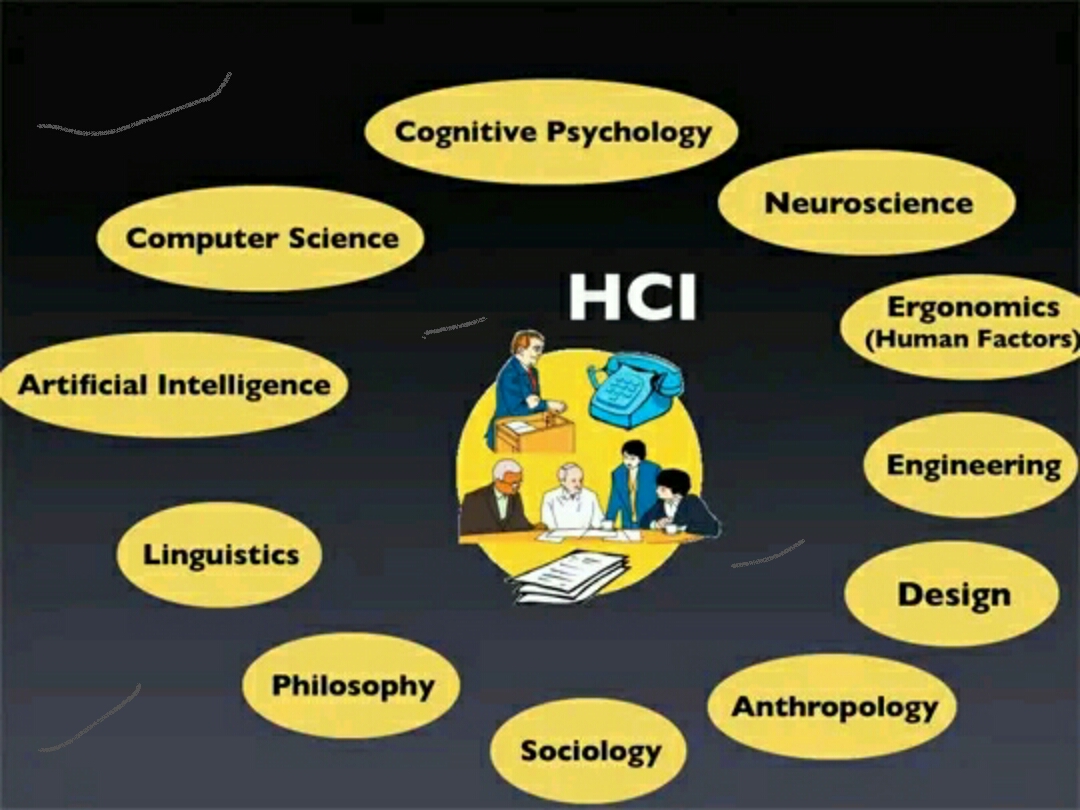Unleashing the Power of Human-Computer Interaction: Revolutionizing User Experiences for the Digital Age

Unleashing the Power of Human-Computer Interaction: Revolutionizing User Experiences for the Digital Age
Human-Computer Interaction: Explore the design principles, usability, and user experience considerations in creating intuitive and user-friendly interfaces for software, websites, and applications.
Introduction:
Human-Computer Interaction (HCI) focuses on the study, design, and evaluation of interactive systems to create intuitive and user-friendly interfaces for software, websites, and applications. HCI aims to enhance the usability and user experience by incorporating design principles and considering the needs, goals, and behaviors of the users. In this article, we will explore the key aspects of HCI, including design principles, usability, and user experience considerations.
Unleashing the Power of Human-Computer Interaction: Revolutionizing User Experiences for the Digital Age

Design Principles:
User-Centered Design: HCI emphasizes designing interfaces based on users’ needs, goals, and expectations. It involves involving users in the design process through user research, personas, and user testing. By understanding users’ mental models and incorporating their feedback, designers can create interfaces that align with users’ expectations and enhance usability.
Consistency: Consistency in interface design ensures that users can predict the behavior of elements based on their prior experiences. This principle involves using consistent visual cues, interaction patterns, and terminology across the interface, reducing cognitive load and facilitating ease of use.
Simplicity: Keeping interfaces simple and avoiding unnecessary complexity helps users quickly understand and use software, websites, or applications. Simplicity can be achieved through clear information hierarchy, minimalistic design, and removing irrelevant or redundant elements.
Feedback and Affordance: Providing immediate feedback to user actions helps them understand the system’s response and provides a sense of control. Affordance refers to design cues that suggest the possible interactions with an element. Well-designed interfaces use visual and interactive cues to indicate how users can interact with different elements.
Mental Models: Designers should consider users’ mental models, which are their understanding of how a system works based on their past experiences. By aligning the interface design with users’ mental models, designers can create intuitive and familiar interactions that users can easily comprehend and navigate.
Iterative Design: HCI follows an iterative design process, where designs are refined and improved through multiple iterations. Feedback from users and usability testing is collected, and design changes are made accordingly. This iterative approach allows for continuous improvement and ensures that the final interface meets users’ needs effectively.
Mobile and Responsive Design: As mobile devices have become ubiquitous, HCI takes into account the unique constraints and capabilities of mobile interfaces. Responsive design principles ensure that interfaces adapt to different screen sizes and orientations, providing a consistent user experience across various devices.
Ethical Considerations: HCI recognizes the importance of ethical design practices. Designers should respect users’ privacy, be transparent about data collection and usage, and ensure that their interfaces do not perpetuate biases or discrimination. Ethical considerations are essential in creating interfaces that prioritize the well-being and rights of users.
Cognitive Load: HCI takes into account the cognitive load imposed on users when interacting with interfaces. Cognitive load refers to the mental effort required to process information and make decisions. Designers aim to minimize cognitive load by simplifying complex tasks, breaking information into manageable chunks, and providing clear instructions and cues.
Error Handling and Messages: Effective error handling is crucial in HCI. Error messages should be informative, concise, and provide users with actionable solutions. Error prevention techniques, such as validation checks and confirmations, can help reduce the occurrence of errors. Additionally, designers should consider providing users with guidance on how to recover from errors and avoid frustration.
Cross-Platform and Cross-Device Design: With the proliferation of various devices and platforms, HCI considers the need for consistency and seamless experiences across different devices and platforms. Designers should ensure that interfaces maintain visual and functional consistency, allowing users to transition between devices without any disruption.
Unleashing the Power of Human-Computer Interaction: Revolutionizing User Experiences for the Digital Age

Usability Considerations:
Learnability: Interfaces should be easy to learn for both novice and experienced users. By providing clear instructions, progressive disclosure of information, and intuitive interaction patterns, designers can reduce the learning curve and help users quickly grasp the system’s functionalities.
Efficiency: HCI aims to optimize user performance by reducing the time and effort required to accomplish tasks. Designers can achieve this by streamlining workflows, providing shortcuts, and automating repetitive tasks. Well-designed interfaces anticipate user needs and facilitate efficient interactions.
Error Prevention and Recovery: Interfaces should be designed to minimize the occurrence of errors and assist users in recovering from them. This can be achieved through clear error messages, undo/redo options, and validation checks that prevent users from making mistakes.
Usability Testing: Usability testing involves observing users as they interact with a prototype or a finished product to identify usability issues and gather feedback. By conducting usability tests, designers can uncover usability problems and make informed design decisions to enhance the user experience.
Information Architecture: Organizing and structuring information in a clear and logical manner is crucial for usability. HCI emphasizes creating effective information architecture, including intuitive navigation, hierarchical categorization, and efficient search functionalities, to help users find and understand information easily.
Emotional Design: HCI acknowledges the impact of emotions on user experience. Emotional design focuses on creating interfaces that evoke positive emotions and engage users on an emotional level. This can be achieved through aesthetics, storytelling, use of color and imagery, and interactive elements that provide delight or surprise.
Contextual Inquiry: HCI involves conducting contextual inquiries, which involve observing users in their natural environment while they perform tasks relevant to the design context. This approach allows designers to gain insights into users’ workflows, challenges, and interactions with existing systems, leading to more informed design decisions.
Unleashing the Power of Human-Computer Interaction: Revolutionizing User Experiences for the Digital Age

User Experience Considerations:
Visual Design: HCI acknowledges the importance of aesthetics in user experience. Visual elements such as color schemes, typography, layout, and graphics contribute to the overall look and feel of the interface. A visually appealing design can evoke positive emotions and create a pleasant user experience.
Accessibility: HCI promotes the inclusivity of all users, regardless of their abilities or disabilities. Designers should consider accessibility guidelines to ensure that interfaces are usable by individuals with visual, auditory, motor, or cognitive impairments. This includes providing alternative text for images, keyboard accessibility, and captions for multimedia content.
Personalization: Interfaces that allow users to customize their experiences can enhance user satisfaction. Personalization features such as adjustable settings, saved preferences, and tailored content can make users feel more engaged and in control of their interactions.
User Research: Conducting user research is a fundamental step in HCI. It involves gathering insights about users’ behaviors, preferences, and needs. Techniques such as interviews, surveys, and usability testing help designers gain a deeper understanding of users and inform the design process.
Context of Use: HCI recognizes the importance of considering the context in which users will interact with the system. Factors such as the physical environment, tasks being performed, and users’ goals and constraints should be taken into account to design interfaces that fit the specific context of use.
User Interface (UI) Elements: HCI considers the selection and placement of UI elements such as buttons, menus, forms, and icons. Well-designed UI elements are visually distinguishable, appropriately labeled, and positioned in logical and consistent locations to support efficient interactions and navigation.
Multimodal Interaction: With the advancements in technology, HCI explores multimodal interactions that go beyond traditional mouse and keyboard inputs. It includes gestures, voice commands, touchscreens, and other sensory inputs to provide users with more natural and intuitive ways to interact with digital systems.
User Feedback and Iterative Improvement: HCI encourages the collection of user feedback throughout the design process. Feedback can be obtained through user surveys, interviews, focus groups, and user-generated content. By actively seeking and incorporating user feedback, designers can identify areas for improvement and refine the interface to better meet user needs.
User Onboarding: HCI recognizes the importance of providing a smooth onboarding experience for new users. The onboarding process should guide users in understanding the system’s features, functionalities, and how to accomplish common tasks. Tutorials, tooltips, interactive walkthroughs, and progressive disclosure of information can help users get up to speed quickly.
Unleashing the Power of Human-Computer Interaction: Revolutionizing User Experiences for the Digital Age

Others are:
Internationalization and Localization: HCI recognizes the importance of designing interfaces that cater to diverse cultures and languages. Internationalization involves designing interfaces that can be easily adapted to different languages and cultural contexts, while localization involves translating and adapting interfaces to specific languages and locales.
SEE ALSO : Top Threats in Cloud Computing and How to Prevent Them
Accessibility Testing: HCI emphasizes the need for accessibility testing to ensure that interfaces are usable by individuals with disabilities. Accessibility testing involves evaluating interfaces with assistive technologies, such as screen readers and alternative input devices, to identify and address barriers to accessibility.
Ethnographic Research: HCI draws insights from ethnographic research, which involves studying and understanding users’ behaviors and experiences within their social and cultural contexts. Ethnographic research helps designers gain a deeper understanding of users’ needs, motivations, and cultural influences, leading to more inclusive and contextually appropriate designs.
READ ALSO : What is Quantum Computing? Everything About Quantum Computing
In conclusion, HCI plays a crucial role in designing intuitive and user-friendly interfaces for software, websites, and applications. By following design principles, considering usability factors, and addressing user experience considerations, designers can create interfaces that are efficient, learnable, error-resistant, visually appealing, accessible, and personalized. By placing the user at the center of the design process, HCI aims to enhance user satisfaction, productivity, and overall usability of interactive systems.











Comments are closed.